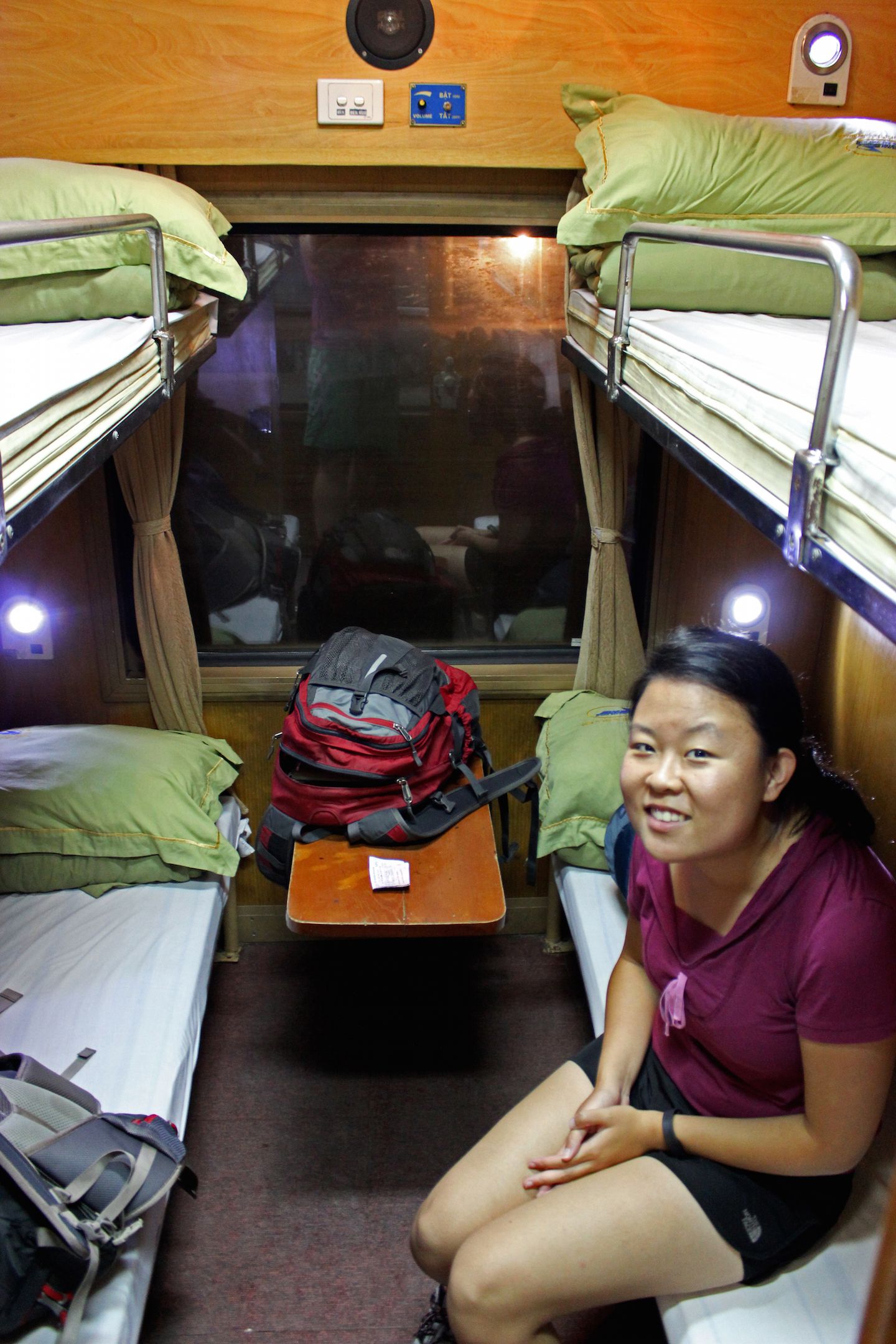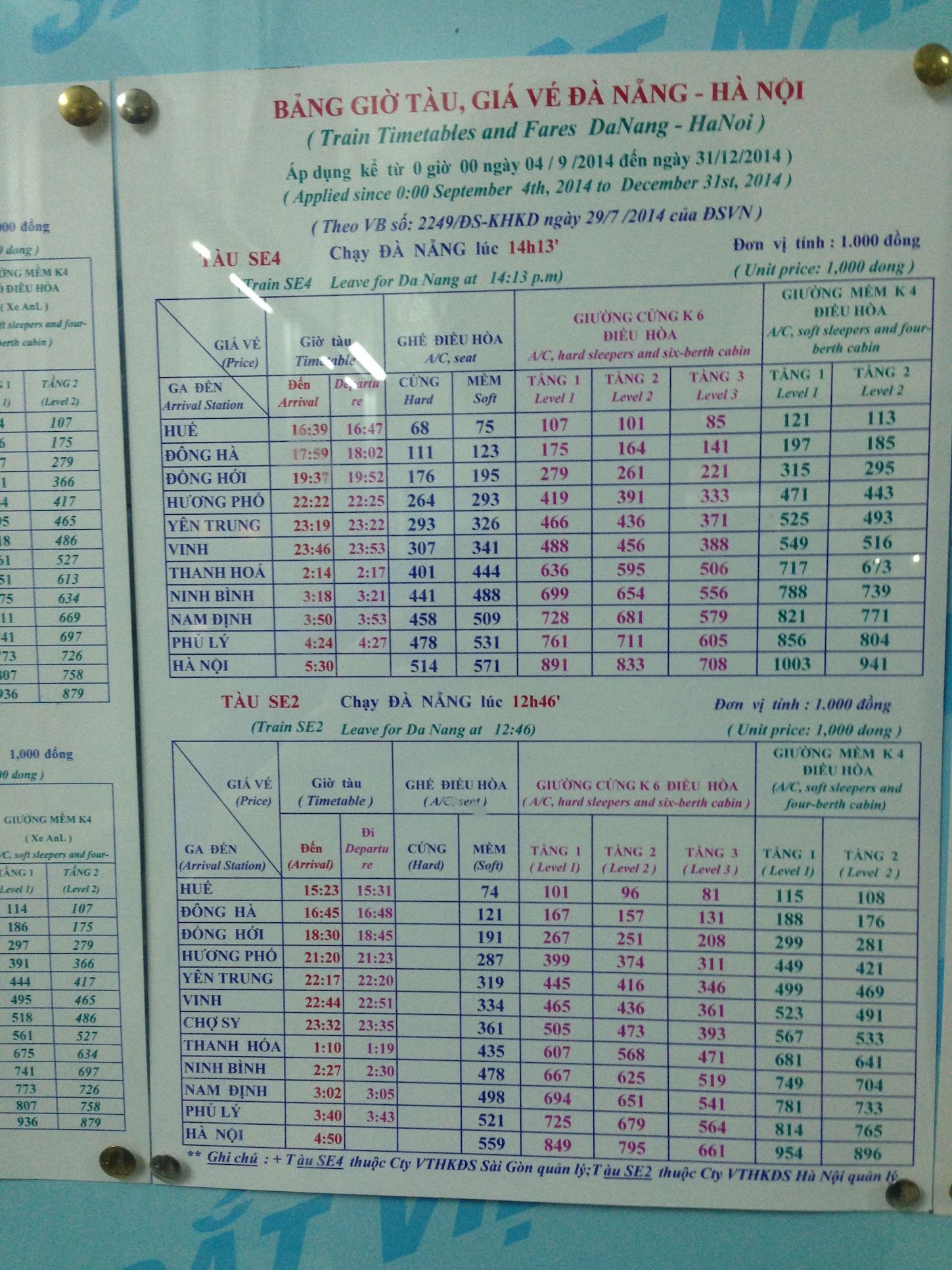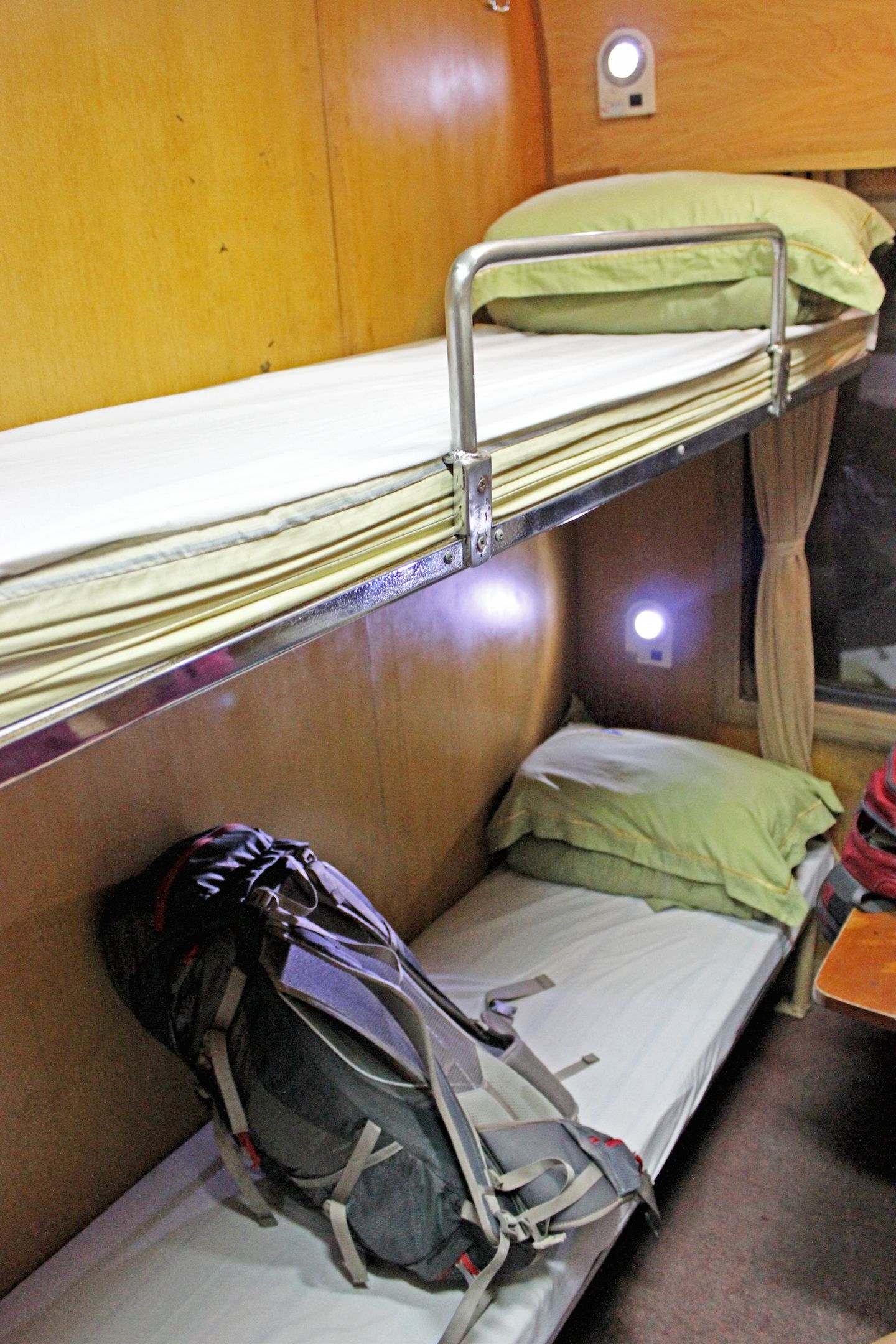To travel the length of Vietnam, whether it’s north to south like we did, or vice versa, there are three options for transportation between cities. Buses, trains, or planes. Flights are usually pretty expensive, and given that we had no time constraints, buses or trains were the best options for us. We ended up taking Vietnamese night trains more often than buses on longer overnight journeys, and here are our experiences.
Why We Took Trains
Many budget travelers opt for the “open tour” bus tickets for their bus travels between cities in Vietnam. While this is by far the cheapest option, there are really no other advantages besides the low price. We read countless stories of awful bus experiences – no one recommends them. The main reasons why we chose to take Vietnamese night trains instead of night buses:
-
There are bathrooms
Surprisingly, there are real toilets, plus it was decently clean with toilet paper (though I still used my own toilet paper and hand sanitizer). Buses often have no bathrooms; instead, there are bathroom breaks on the side of the road every few hours in the middle of the night. For guys, it may not be a big deal to stand and pee. For girls, it sucks to take off your pants and squat where it’s dirty, smelly, with bugs and spiders… or just in the open in front of everyone -
You can lie down horizontally
The length of the bed actually fits me (I’m 5’8”) which is shocking for Asian standards, and even fits Carlos (he’s 6’3”) when he puts his legs over our bags. You can get up and walk around should you get tired of lying down or sitting. Buses have narrow half-reclined seats and narrow, low-ceiling corridors. -
The train is safer
By all accounts the roads in Vietnam are not the safest. Nor do all drivers follow traffic laws (this is evident within the first few minutes of walking/driving anywhere in Vietnam). Other travelers also report seemingly suicidal drivers as well as those who may be driving impaired. This is probably why Vietnam has one of the highest road accident rates in the world. -
The train is faster
Usually the Vietnamese night train is faster by a few hours. Considering most trips are already 10+ hours, you don’t want to spend another 2 or 3 hours extra. The bus often goes through the city first to pick up passengers. Other travelers also report having trouble finding the appropriate bus at times.
Having said that, the bus is still a viable option, as is flying, depending on your travel needs and budget. We read that the best overnight bus section in Vietnam is between Nha Trang and Ho Chi Minh City, so we decided to experience buses in Vietnam at least once, but more on that in the buses in Vietnam post.
All of our Vietnamese night train tickets were soft berth sleepers (Nam Mem) on the bottom bunk (Tang 1), which were the best regular tickets offered.
Hanoi to Lao Cai (Sapa) to Hanoi
We booked these roundtrip tickets through our hotel for 3,220,000 Dong for both of us (USD 150), thinking it was the best price. Other sources on the internet were even more expensive. It turns out we were wrong, and the actual ticket prices were much cheaper. The way we found out was from the ticket itself, that had a small piece of paper stapled to the ticket at least six times. We were curious why it was stapled many times, until we peeled it off to reveal that it was hiding the actual price of the tickets: 630,000 Dong one way per person (USD 30).

This meant that the 2 roundtrip tickets should have cost 630,000 x 4 = 2,520,000 Dong (USD 120). Essentially, we paid $30 more than it was worth. $30 may not sound like much, but in Vietnam, that’s a lot of money.
Needless to say, we were not particularly happy about this. However, there was nothing we could do at that point. At least the train tickets were real and we had no problems, so not a real scam per se. I guess it was a “convenience fee” since our hotel bought and delivered the tickets to us. Plus we had no one else in our 4-bed compartment, so it was almost as if we paid for the private 2-bed compartment. Having said that, we were determined to not pay the “commission” in our future train tickets.
The train ride itself was not the greatest. The “soft sleepers” are not really soft, but at least not hard wooden beds. It’s questionable whether the sheets, pillow, and blanket have been washed. The train constantly rocked left and right, up and down, which feels like someone is shaking you awake every few minutes.

From Hanoi to Lao Cai, the first time we closed our compartment door, a cockroach crawled out that we killed. I was afraid someone would join our compartment and possibly steal from us while we were sleeping. Basically, I was not mentally prepared for our first Vietnamese night train experience, and I think I only slept an hour or two the entire night (Carlos slept like a baby for most of it).
On the way back from Lao Cai to Hanoi, it was a better experience. Maybe it was because I knew what to expect. Our sheets, pillow, and blanket were all cleaner than the previous ride. We were lucky and had no one in our compartment again. I slept a decent amount, though that was probably because we were so exhausted after our Sapa treks. Before the train took off, a random lady walked into our compartment and tried to steal a light bulb from the lamp, except that the bulb was burnt and didn’t work, discouraging her from proceeding with her intentions. We just looked like her in confusion and disbelief the whole time.
Hanoi to Hue
This route is very popular (aboard the Reunification Express) so we made sure to book tickets in advance. We read stories where travelers couldn’t get a train ticket on the day they wanted and thus had to endure the awful night bus ride. This time, we went to the train station ourselves in order to get the best price. It turned out to be way easier than I imagined.

Train stations usually had charts that listed the prices of destinations, times and different classes of seats. Some even had English labels. It didn’t take long for us to figure out which train we wanted. We wrote down exactly what we wanted on a piece of paper – train number, destinations, times, date, seat type, level, etc. Then we showed the paper to the ticket sales ladies, who also knew some basic English. Each ticket window also had a monitor that displayed the details of the tickets before payment, so we were able to confirm that we were buying the correct ones.

So our Hanoi to Hue one way tickets only cost 881,000 Dong (USD 41) each. We’re pretty confident that this is the best price we could have gotten.
This train was even better than the ones before. The beds were pretty clean and there was even complimentary water bottles provided on the table. Our luck ran out and we had another Vietnamese man join our compartment. He did not bother us, though he brought with him so many things, including a plant and several large boxes/packages. The next morning we learned that one of the packages contained a small Chihuahua dog! Even though the dog remained quiet for the entire night, it peed on the floor of our compartment in the morning.

Apparently, it is also a Vietnamese tradition to use the first level bunk as a regular seat, and in the morning I woke up with the man sitting on my bed. He even moved my legs with his hands to make room for himself, while I was sleeping. Fortunately for this ride, I had brought a silk sleeping bag lining, which was a convenient way to protect myself from possible dirty and unwashed sheets and from this kind of situation.

Da Nang to Nha Trang
This was our last Vietnamese night train journey in Vietnam. It was by far the dirtiest out of all of the trains. Since Da Nang is one of the later stops for the Reunification Express trains that run from Hanoi to Ho Chi Minh City, it was clear by the time that we walked into our compartment that the sheets, pillows and covers were not changed. They were all lying on the bed in a pile, as if somebody had just used them overnight. Carlos’ bed was incredibly dirty and had the same red stains that were on the ground of the compartment – we’re hoping it was fish sauce and not something else. Good thing I had my silk sleeping bag and we also brought an extra sheet that Carlos was able to use to wrap himself.

Several people came in and out of the compartment during the night as the train stopped to drop off and pick up more people. That combined with the dirtiness of our compartment probably made this ride one of the longest and most restless. We arrived in Nha Trang feeling as if we had not slept for days, as well as in need of a good shower.
This pretty much sums up our experiences with Vietnamese night trains. It has been an adventure in and of itself. Although they weren’t the best, we can only imagine how much worse the bus rides on these same routes would have been. Read more about when we did take the bus between cities in Vietnam, both overnight buses as well as public ones.

